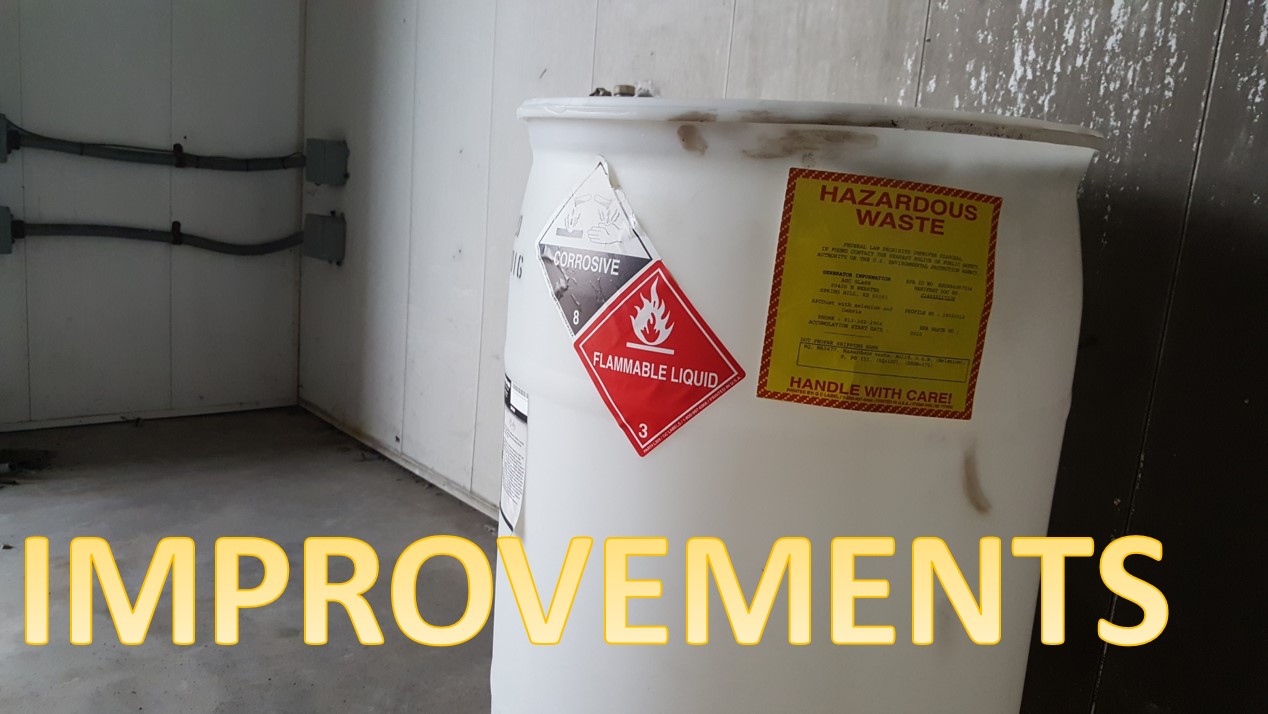Prior to May 30, 2017 the Federal regulations of the USEPA lacked a clear definition of the term “acute hazardous waste”. That changed with the implementation of the Generator Improvements Rule.
Note: Check with your state to see if it has adopted the Generator Improvements Rule |
The definition:
Among its many other changes to the USEPA regulations for generators of a hazardous waste, the Generator Improvements Rule added a definition of acute hazardous waste at 40 CFR 260.10:
Acute hazardous waste means hazardous wastes that meet the listing criteria in §261.11(a)(2) and therefore are either listed in §261.31 of this chapter with the assigned hazard code of (H) or are listed in §261.33(e) of this chapter.
Why is it acute hazardous waste?
The definition at §260.10 directs us to §261.11(a)(2); it reads:
It has been found to be fatal to humans in low doses or, in the absence of data on human toxicity, it has been shown in studies to have an oral LD 50 toxicity (rat) of less than 50 milligrams per kilogram, an inhalation LC 50 toxicity (rat) of less than 2 milligrams per liter, or a dermal LD 50 toxicity (rabbit) of less than 200 milligrams per kilogram or is otherwise capable of causing or significantly contributing to an increase in serious irreversible, or incapacitating reversible, illness. (Waste listed in accordance with these criteria will be designated Acute Hazardous Waste.)
Cutting through the technical data and the dead rats the above statement tells us that an acute hazardous waste is a really nasty hazardous waste, “…fatal to humans in low doses…”
Where does a generator identify an acute hazardous waste?
In addition to the above criteria, an acute hazardous waste must be listed in one of two places in the regulations
- §261.31 with the assigned hazard code of (H).
Or…
- §261.33(e).
Hazardous waste listed at 40 CFR 261.31 with the assigned hazard code of (H):
§261.31 contains the list of hazardous wastes generated from non-specific sources; known as F-listed hazardous waste. However, only some of these F-listed hazardous waste are assigned the hazard code of (H), which identifies them as acutely hazardous. F-listed hazardous waste assigned the hazard code of (H) are as follows:
| Contents | Lithium metal cells and/or batteries with a lithium content of 0.3 g or less | Lithium metal cells with a lithium content of more than 0.3 g but not more than 1 g | Lithium metal batteries with a lithium content of more than 0.3 g but not more than 2 g |
|---|---|---|---|
| 1 | 2 | 3 | 4 |
| Maximum number of cells/batteries per package | No limit | 8 cells | 2 Batteries |
| Maximum net quantity (weight) per package | 2.5 kg | N/A | N/A |
Hazardous waste listed at 40 CFR 261.33(e):
§261.33(e) lists the technical names of commercial chemical products, manufacturing chemical intermediates or off-specification commercial chemical products or manufacturing chemical intermediates that are a P-listed hazardous waste when discarded unused. All P-listed hazardous waste are an acute hazardous waste.
Note: Read this article to ensure the proper determination of P and U-listed hazardous waste |
An acute hazardous waste is…
- Defined at §260.10,
- Meets the listing criteria at §261.11(a)(2), and;
- Is listed at §261.31 and assigned the hazard code of (H), i.e., an acutely toxic F-listed hazardous waste or;
- Is listed at §261.33(e), i.e., a P-listed hazardous waste.
Contact me with any questions you may have about the generation, identification, management, and disposal of hazardous waste Daniels Training Services, Inc. 815.821.1550 |
Conclusion:
Acute hazardous waste are subject to more stringent regulations than hazardous waste. Including the following:
- Counted separately from hazardous waste and a lower threshold when determining hazardous waste generator category.
- More strict requirements for determination of RCRA empty.
- Lower threshold limits for accumulation in a satellite accumulation area.

